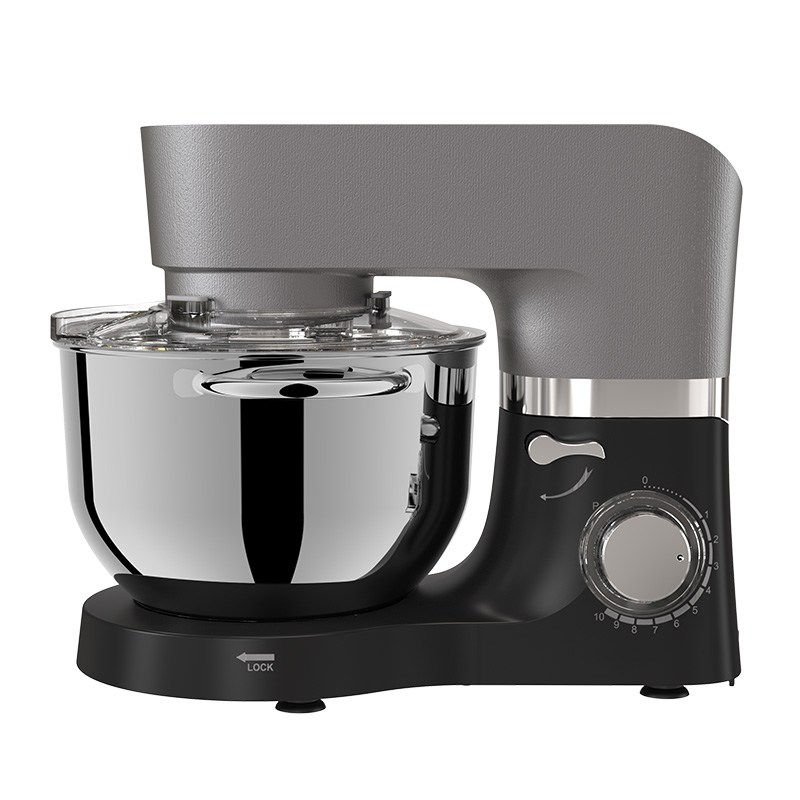How to Choose the Size of a Stand Mixer?
August 04, 2025When investing in a stand mixer, one of the most important decisions you’ll make is selecting the right size. Too small, and you'll struggle with overflows or multiple batches. Too large, and you'll waste energy or lose mixing efficiency for smaller tasks. Whether you're a home baker or running a commercial kitchen, understanding the capacity and power of a mixer can directly influence your productivity.

Stand mixer bowl sizes typically range from 3.5 liters (L) to 10 liters or more. Here's a general breakdown of what each capacity is best suited for:
| Bowl Size | Ideal Use Case | Batch Size Example |
| 3.5–4.5 L | Occasional baking, small family needs | 1 loaf of bread, 1 dozen cookies |
| 5–6 L | Regular home baking, light meal prep | 2 loaves, 2 dozen cookies |
| 7–8 L | Serious home bakers, small catering businesses | 3–4 loaves, double batches |
| 9–10 L+ | Commercial kitchens, bakeries, high volume | 5+ loaves, 5+ dozen cookies |
Choosing a Stand Maker Mixer With 10L Bowl can be ideal for commercial operations or if you frequently prepare large quantities, such as dough for pizza restaurants, cake businesses, or daily baking services.
Size isn't just about volume—it also relates to motor strength. A Commercial Electric Stand Food Mixer with a 10L bowl typically comes equipped with a motor ranging from 800W to 1500W, powerful enough to handle heavy dough and prolonged mixing without overheating.
In contrast, a 4.5L stand mixer might only require 300–500W to perform effectively. Using a high-volume bowl with an underpowered motor can result in uneven mixing or motor strain.
| Mixer Type | Capacity | Motor Power Range |
| Basic Home Stand Mixer | 3.5–5 L | 300–500W |
| Large Capacity Stand Mixer (Home) | 6–8 L | 500–800W |
| Commercial Electric Stand Mixer | 9–12 L | 800–1500W |
When evaluating power needs, also check for overload protection, gear-driven systems, and planetary mixing motions, which ensure thorough ingredient incorporation regardless of bowl size.
If you're mostly working with dough, it's important to consider how much flour and water your mixer can support per batch.
| Bowl Capacity | Max Dough Weight | Max Flour Weight |
| 5 L | ~1.2 kg | ~700 g |
| 7 L | ~2 kg | ~1.2 kg |
| 10 L | ~3.5–4 kg | ~2.5 kg |
A Large Capacity Stand Mixer is essential for preparing consistent results when kneading large dough quantities. It reduces prep time and allows for efficient batch production.
Larger stand mixers aren’t just heavier—they’re bulkier, often requiring more countertop clearance and stronger surface support. A 10L commercial mixer can weigh 15–25 kg, with dimensions exceeding 45 cm in height and 35 cm in width. Before purchasing:
Measure your counter space and overhead clearance
Confirm surface strength for heavier equipment
Factor in bowl removal space (you’ll need clearance to lift or detach it)
| Use Frequency | Suggested Mixer Size |
| Occasional (1–2x/month) | 4–5 L |
| Weekly (1–2x/week) | 5–6 L |
| Daily (home or small biz) | 6–8 L |
| High-volume daily (biz) | 9–10+ L |
If you're purchasing for a bakery or catering kitchen, a Stand Maker Mixer With 10L Bowl may be your best option, supporting constant use and heavy-duty applications.
Larger mixers usually come with more robust attachments like:
Stainless steel dough hooks for tougher kneads
Whisks and flat beaters built for volume
Pasta rollers, meat grinders, shredders (optional or compatible add-ons)
Smaller mixers may still support accessories but usually aren't designed to handle the same versatility or pressure.
Larger capacity mixers, especially Commercial Electric Stand Food Mixers, tend to run quieter because of superior insulation and gear design. They’re also more stable under load. Small mixers on the other hand may vibrate or shift during heavier mixing.
Consider a weighted base or suction feet if you're limited to smaller capacity models but require high-speed mixing.
Ask yourself the following:
Do you bake or cook for large families or events?
Do you frequently knead bread or pizza dough?
Do you batch-prep freezer meals, frosting, or batter?
Are you a business scaling production?
Do you want to grow into your mixer instead of quickly outgrowing it?
If most of your answers lean toward yes, you’re likely ready for a Large Capacity Stand Mixer or a Commercial Electric Stand Food Mixer with at least 8–10 liters of bowl capacity.